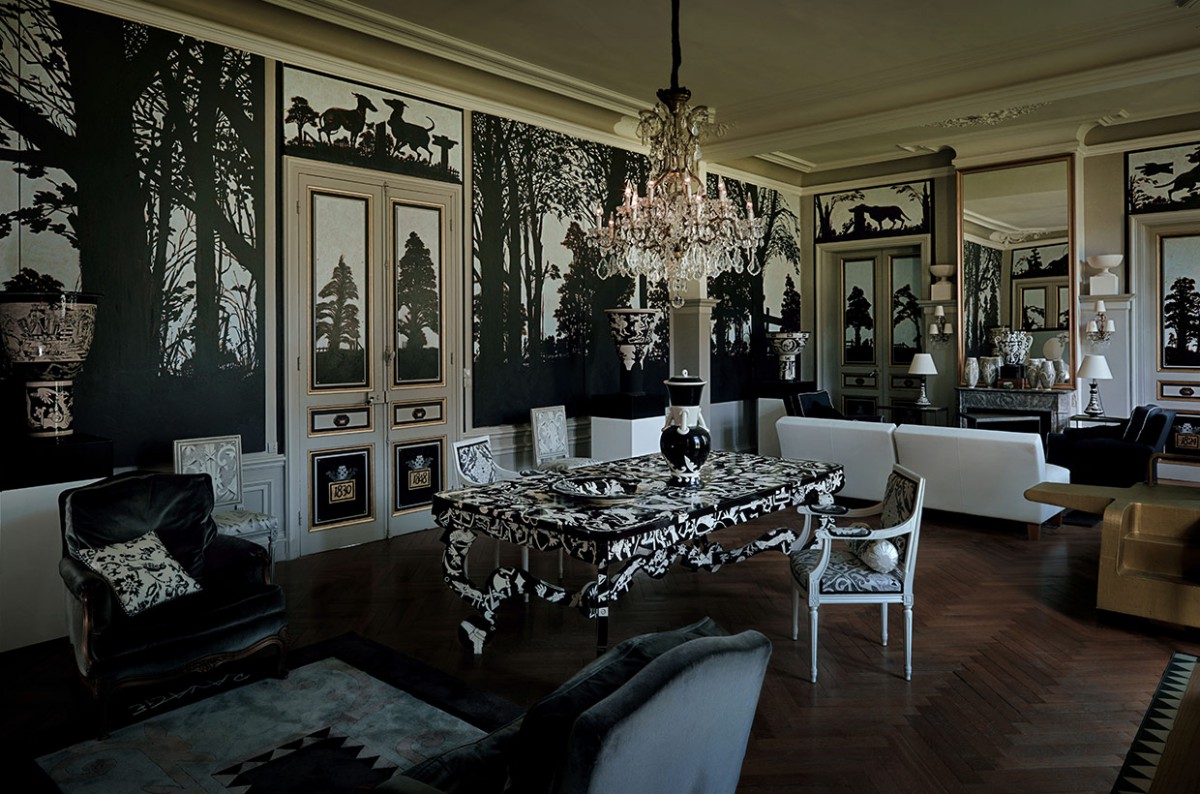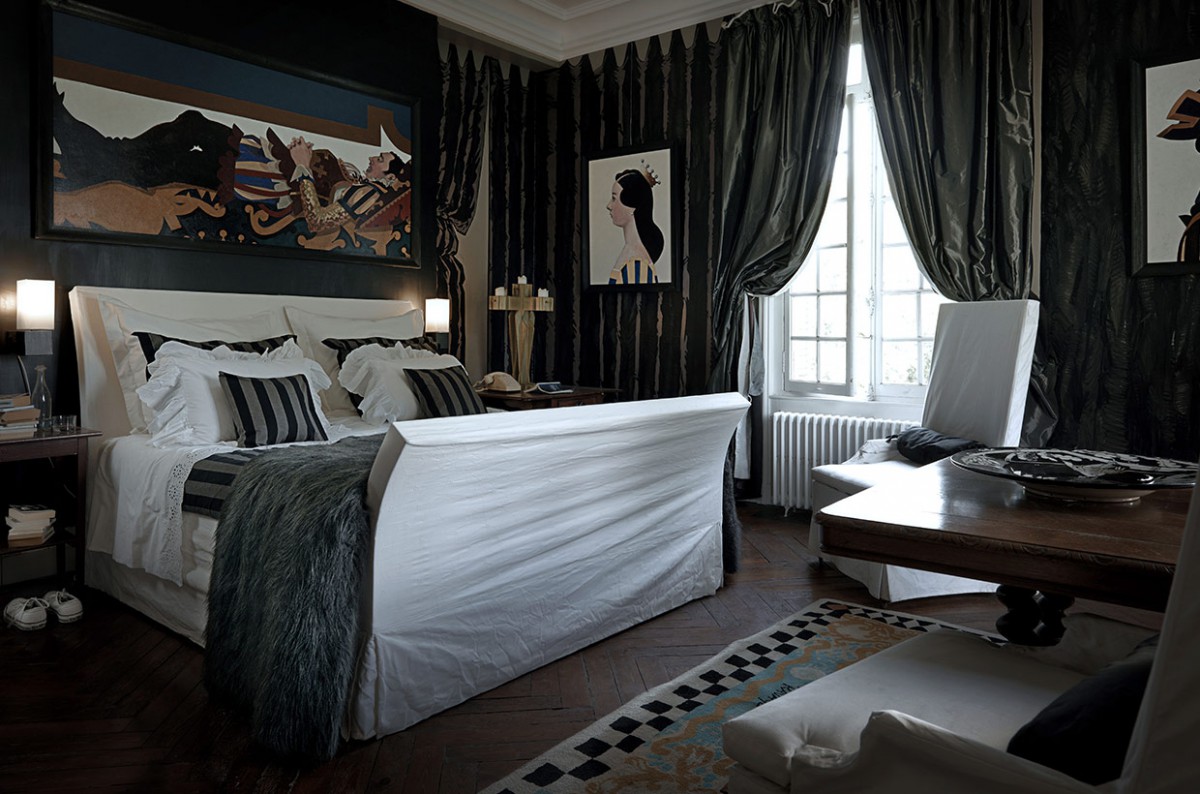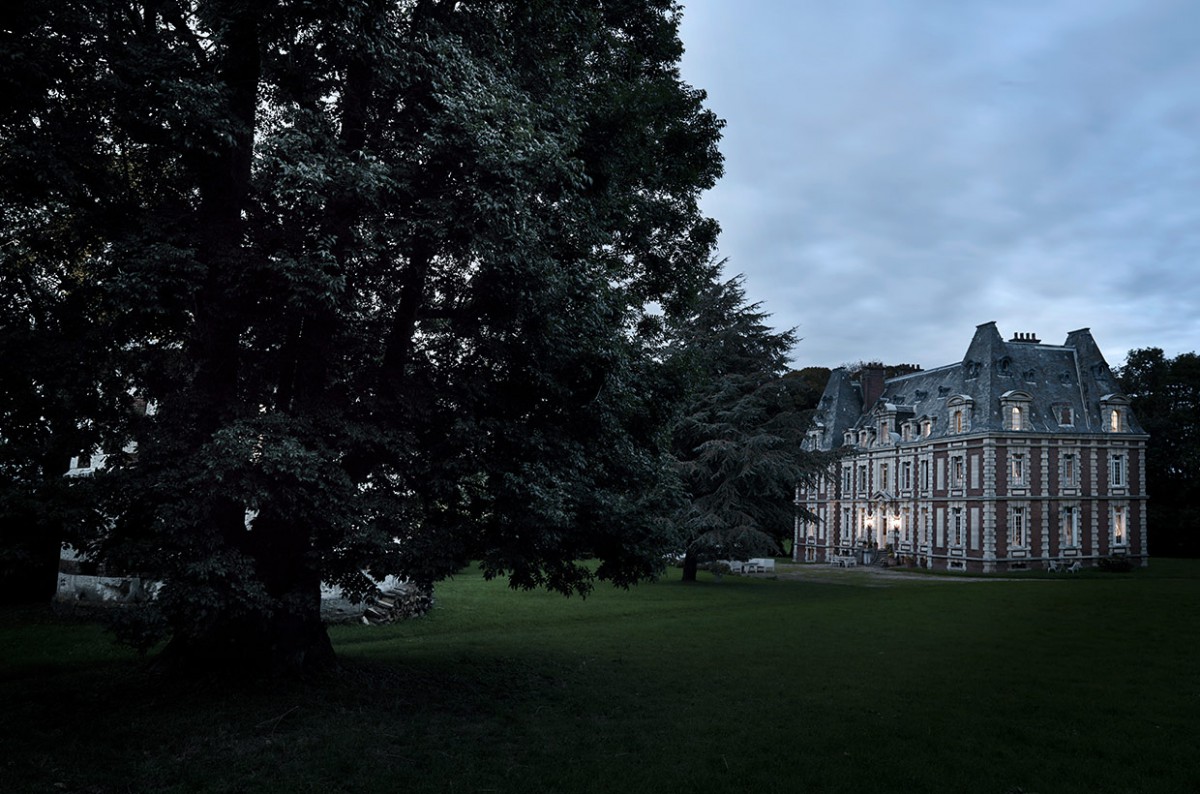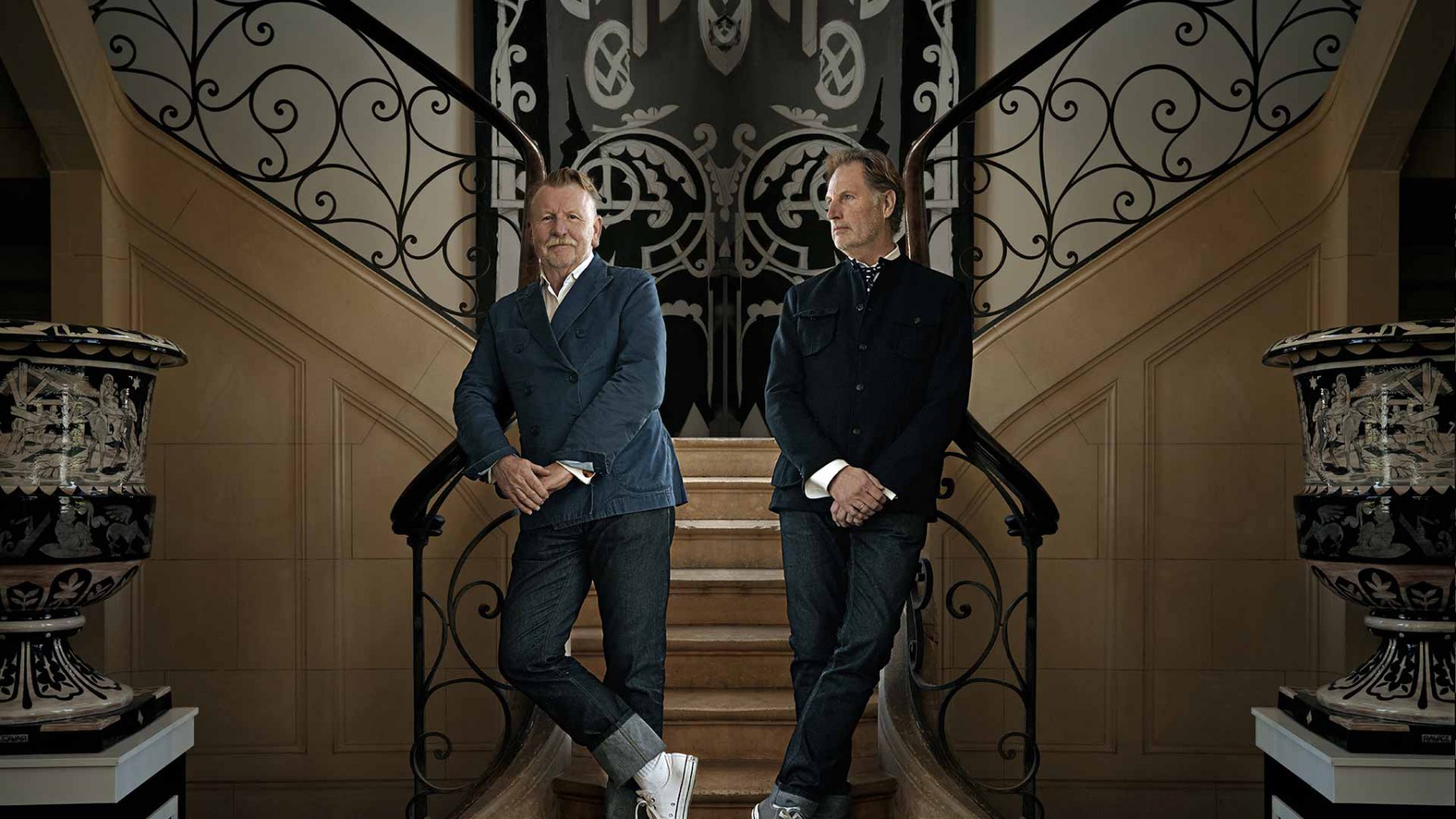A Refuge for Two Romantics by Uta Abendroth | 1st September, 2013 | Personalities
Clemens Rameckers and Arnold van Geuns have been calling Paris their home for many years. But at some point the two Dutchmen were gripped by a longing for a house in the countryside. In Normandy, not far from the city of Le Havre, the two designers, artists and trend scouts, who are jointly known as Ravage, discovered the Château d’Écrainville. The two creatives recently opened the doors of their home to GG: the interior of the 19th century castle features an opulent black-and-white color scheme that contrasts with its traditional exterior.
The name Ravage tends to conjure up images of chaos or destruction but that is entirely misleading. Clemens Rameckers and Arnold van Geuns, the creative duo who trade under the name of Ravage, came up with the moniker by simply putting together the first letters of their last names. Plus, their home is anything but chaotic. At the Château d’Écrainville, pieces of furniture and decorative objects form a chic collage that serves as a backdrop for stylish living. Most of the items were conceived by the owners of the castle themselves or by famous designers who once worked for them as trainees. “Our home does have a certain museum-like quality to it,” admits Clemens Rameckers. “The different rooms resemble traditional treasure chambers, but are nevertheless very contemporary. The way we designed the interior and with the style of decorations we used, we breathed new life into the old walls. We did not just renovate the interior of the building, we changed the whole feel of it.”
“Our style is quintessentially Dutch: simple. We only learned about interior design in France.” Clemens Rameckers
The two native Dutchmen have lived in France for around 40 years. After graduating from Arnhem Fashion Academy in the Netherlands they moved to Paris “to spread their creative wings,” as Clemens Rameckers puts it. In a small attic appartment, they designed their first fashion collection. Arnold van Geuns remembers those days fondly: “From there, we explored Paris and the world of fashion; and a little later we began exploring interior design, too. At the time, inventiveness, pioneering spirit and a strong knack for innovation were very welcome.”
In France, the duo expanded their creative horizons: “We are strongly influenced by architect Gerrit Rietveld, by De Stijl and by Bauhaus,” says Clemens Rameckers. “In that regard, we are very Dutch, and espouse simplicity. It was only in France that we learned the fantastic art of interior design.” And so, apart from creating their own fashion designs, Ravage produce a trend forecast for Li Edelkoort’s Paris-based Trend Union twice a year. They also act as consultants to large brands, paint, and design porcelain objects, furniture, carpets, home textiles, crockery, glassware and more.
“Luckily, the chateau was not a protected historical building. So we had free rein to use our own, Ravage style in it.” Arnold van Geuns
But at some point, Rameckers and van Geuns needed more peace and quiet for their creative work than they were able to find in a bustling city like Paris. They found a pied-à-terre on the so-called “Alabaster Coast” in Haute-Normandy. Rameckers and van Geuns commuted between their rural hideaway and their white loft apartment in the Rue Jean-Pierre Timbaud, and later on, their modern apartment on the Boulevard Montparnasse. Until the Château d’Écrainville came into play, that is. The idea of living in a castle like two British aristocrats had a certain appeal to Rameckers and van Geuns. Not because they were pretentious or wanted to show off, but because they wanted to give themselves free rein creatively, and to finally turn some of the ideas which they had been developing for decades into reality.
The Château d’Écrainville in its current form was constructed in 1880 on the site of an even older castle. Although the structure hails from the 19th century, its large central building and wings projecting out on either side reflect a 17th century architectural style. The castle is located in a rural part of France which is dotted with picturesque villages. Le Havre, the closest larger city, is located about 30 minutes away from the Château d’Écrainville by car. The grand brick building with its gray slate roof rises over a huge green area which forms part of an eight-hectare estate with large amounts of woodland. Between the tall trees there is a round dovecote building, and a small distance away is the shed where horse-drawn carriages used to be parked.
“We live in a time of freedom, diversity and imagination. The trend is towards more and more decorative styles.” Clemens Rameckers
“During World War II, the chateau was used as a hospital,” says Arnold van Geuns. “After that, it was empty for almost 20 years, before being completely refurbished in the 1970s. When we renovated it, we made small alterations everywhere. We more or less restored the chateau to its original style, but decorated it less lavishly.” For a typical French chateau, Écrainville has a comparatively small amount of gilded surfaces. Rather, the predominant colors are black, white and ecru, accentuated with hues of blue and gold.
One of the rooms, a former library and a very impressive space, is the “Grand Salon.” The current owners of the castle removed two walls and a wooden staircase in order to further increase its size. Arnold van Geuns has painted outlines of trees and plants on the walls and doors – in black and white, of course, to match the color scheme throughout the castle. The motifs, which feel like a modern interpretation of traditional landscape wallpapers, reveal something about Ravage’s motivation. They love to transform spaces: “I would not call the large pieces on the walls key works. They are purely romantic and perfectly illustrate the essence of Ravage,” explains painter Arnold van Geuns. “Ravage was born with a romantic soul. Everything we do is about feelings, as opposed to reason. In the 18th century, during the Age of Enlightenment, everything was being analyzed and explained. The backlash to this was an immensely romantic approach – people wanted to let their hearts speak. I consider my paintings to be contemplative works, too: my trees only give an impression of nature, not an analysis of it. The décor of the Grand Salon invites you to look and indulge, not to explore it intellectually.”
“Our residence is actually a little reminiscent of a museum. But it is contemporary, nonetheless.” Clemens Rameckers
You will, however, want to explore the entire chateau, and have every accessory explained to you, as most of the objects come with a story. Like the vases in the foyer, which were designed and painted by the artists themselves. One of them is marked “L’Arrivée,” the other “Le Départ.” More than 40 years ago, Rameckers and van Geuns had seen vessels featuring these words in the foyer of the Musée de Sèvres, and resolved to emulate the idea, should they ever own a house big enough for such vases.
The artists renovated the stucco, the old fireplaces and the mirrors. Even the castle’s old bathtub is still in use today. The multi-talented Ravage duo have long distanced themselves from the austere minimalism they grew up with. They find inspiration while travelling – preferably with their small vintage caravan, a 1950s Eriba Puck – and make full use of the stylistic freedoms that are available to them today. Clemens Rameckers sums up Ravage like this: “We are a mix of Dutch simplicity and French savoir-vivre.”






